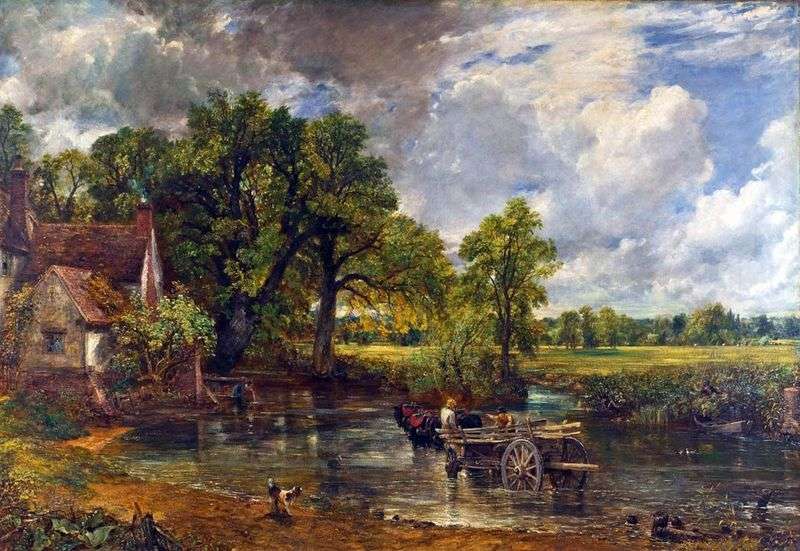
This picture is part of a series of “six foot” paintings with scenes of everyday life in the valley of the Stour River. The artist worked on the “cart for hay” in his London workshop, using old drawings and sketches of oil. Warm, quiet day. Horses are slowly walking through the ford. From the low bank behind the cart follows an inquisitive dog, whose look helps the artist to direct into the depths of the picture and viewer’s view.
For the first time, the “Cart for hay” was exhibited at the Royal Academy under the title “Landscape: Noon”. Constable tried as accurately as possible to fix all the fleeting features of lighting and the atmosphere. Despite the positive reviews of critics on the picture, after the exhibition at the Royal Academy, no one bought it.
Three years later, “The cart for hay” was shown in the Paris Salon, and here it was a real sensation. Constable raised his hand with a glass of water and asked the audience: “What color do you see in front of you?” In his second lecture on the landscape, which dealt with the “brightness” of Claude Lorrain’s works, Constable raised his hand with a glass of water. Indeed, how to convey transparent water on the canvas? Constable himself solved this problem with the help of light flashes written by titanium whites. But, of course, he realized that some glare is not enough.
It was important to be able to represent water in all its diversity – from the river stream to the dew lying on the grass, from droplets of moisture on wet leaves to damp spots on a decayed log or cart wheels. Constable was able to transfer all of these effects by tiny strokes and specks, whitening the same, varying the thickness of the layers of paint in accordance with the texture of the object. This original, truly innovative technique was not immediately appreciated by critics who for a long time called mottled white “snowflakes of Constable”.
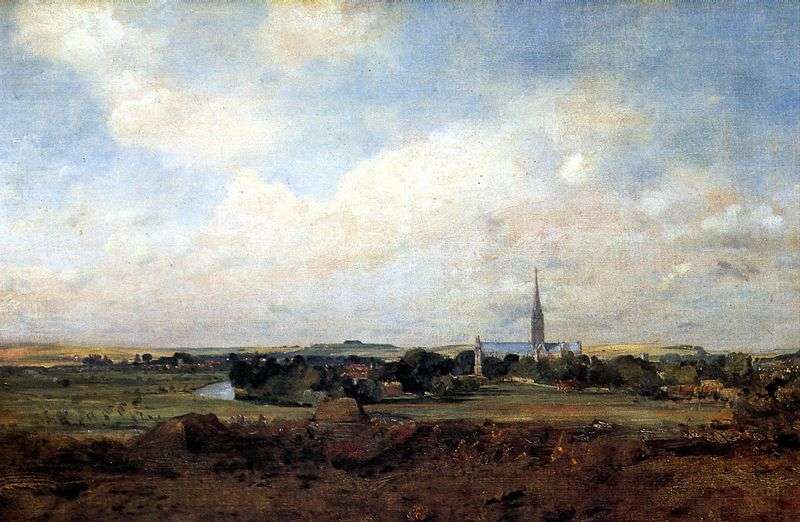 View of Salisbury by John Constable
View of Salisbury by John Constable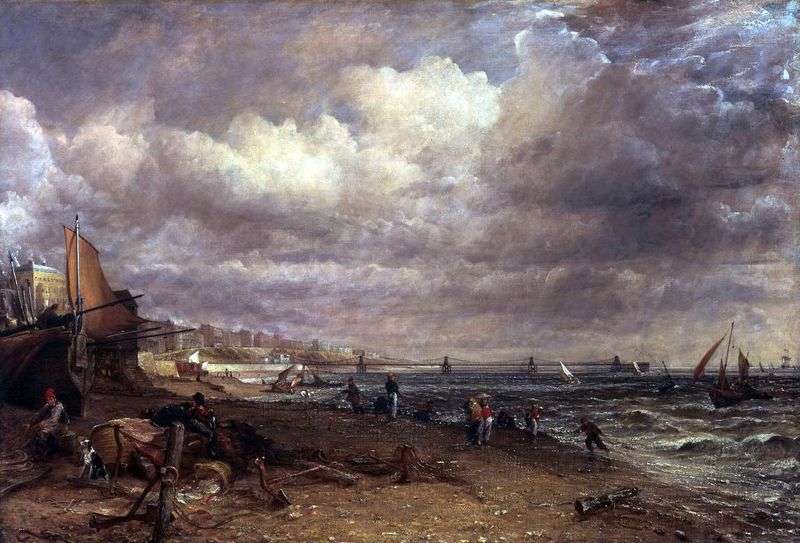 Pier in Brighton by John Constable
Pier in Brighton by John Constable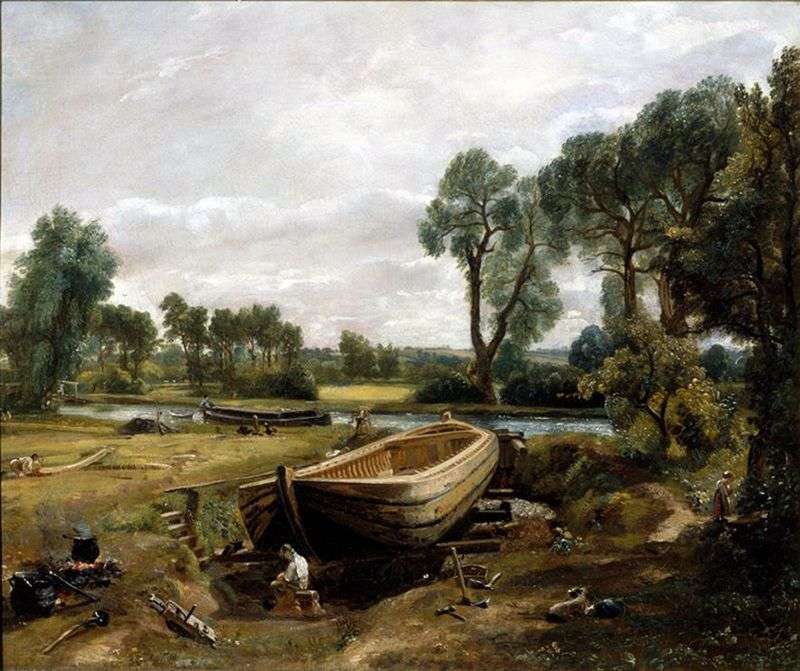 Construction of the barge by John Constable
Construction of the barge by John Constable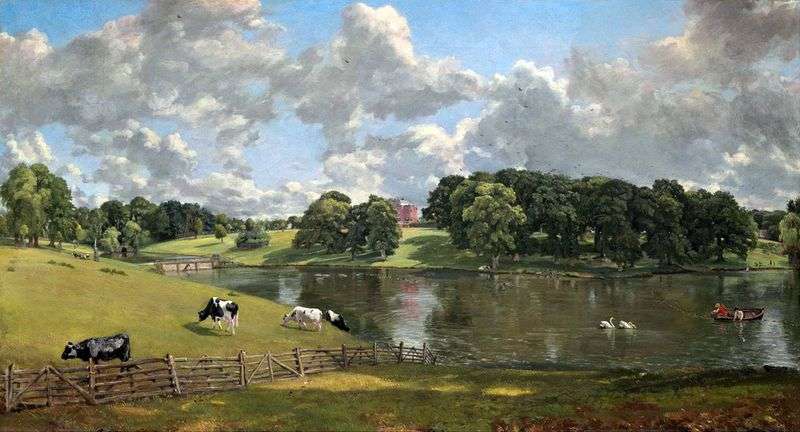 Wywenhou Park by John Constable
Wywenhou Park by John Constable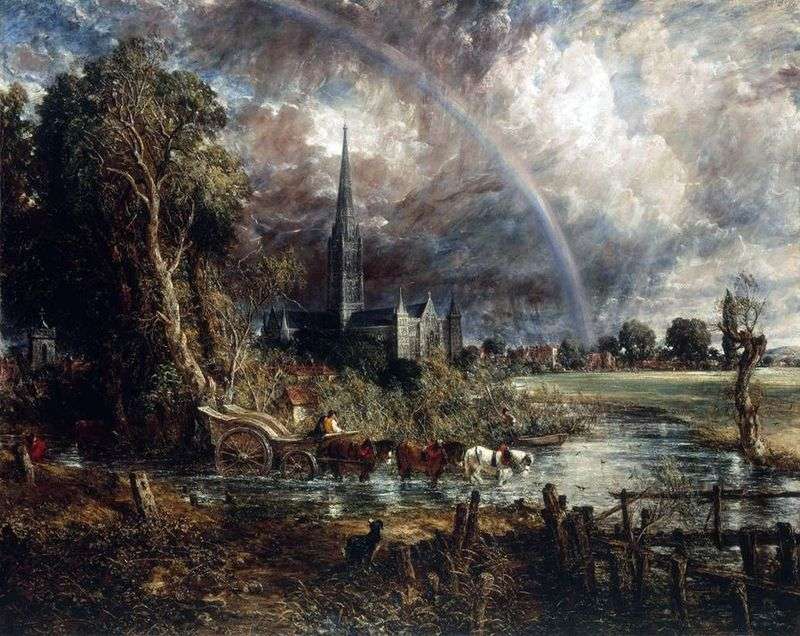 View of the Salisbury Cathedral from the meadows by John Constable
View of the Salisbury Cathedral from the meadows by John Constable Flatford mill (Scene on the navigable river) by John Constable
Flatford mill (Scene on the navigable river) by John Constable Mezzo Tinto by John Constable
Mezzo Tinto by John Constable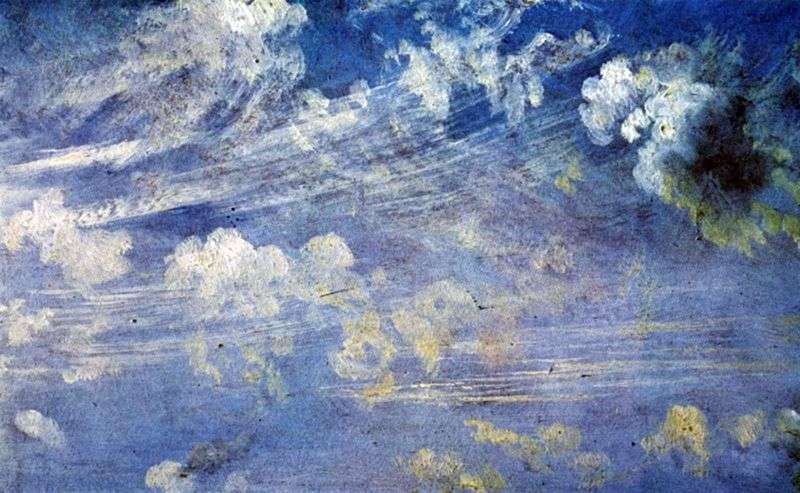 Cirrhous clouds by John Constable
Cirrhous clouds by John Constable